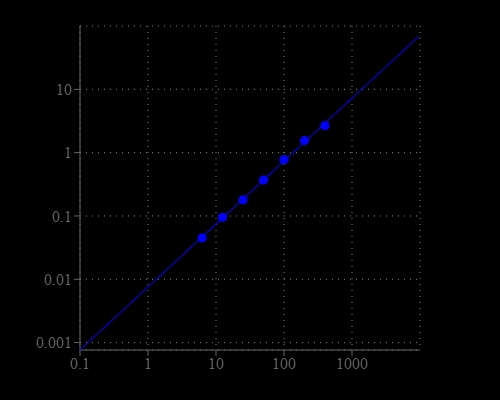Amplite® Colorimetric Butyrylcholinesterase Activity Assay Kit
Butyrylcholinesterase (EC 3.1.1.8; BChE), also known as pseudocholinesterase or plasma cholinesterase, is mainly synthesized in liver and present in blood. BChE is a nonspecific cholinesterase enzyme and can hydrolyze many different choline esters, serving as the first line of defense against toxic compounds reaching the bloodstream. It has been identified as a clinical biomarker of organophosphate poisoning. Amplite® Colorimetric Butyrylcholinesterase Activity Assay Kit is based on a synthetic butyrylthiocholine-based substrate, which can be hydrolyzed by BChE and produce thiocholine. Thiocholine can react with 5, 5'-dithiobis (2-nitrobenzoic acid) (DTNB) and generates a yellow chromophore that can be detected at 410 nm. The assay is convenient, sensitive and can detect as low as 6 mU/mL in variety of samples.


| Catalog | Size | Price | Quantity |
|---|---|---|---|
| 11406 | 100 Tests | Price |
Storage, safety and handling
| Intended use | Research Use Only (RUO) |
Instrument settings
| Absorbance microplate reader | |
| Absorbance | 410 ± 5 nm |
| Recommended plate | Clear bottom |
Contact us
| Telephone | |
| Fax | |
| sales@aatbio.com | |
| International | See distributors |
| Bulk request | Inquire |
| Custom size | Inquire |
| Technical Support | Contact us |
| Request quotation | Request |
| Purchase order | Send to sales@aatbio.com |
| Shipping | Standard overnight for United States, inquire for international |
Page updated on December 31, 2025
